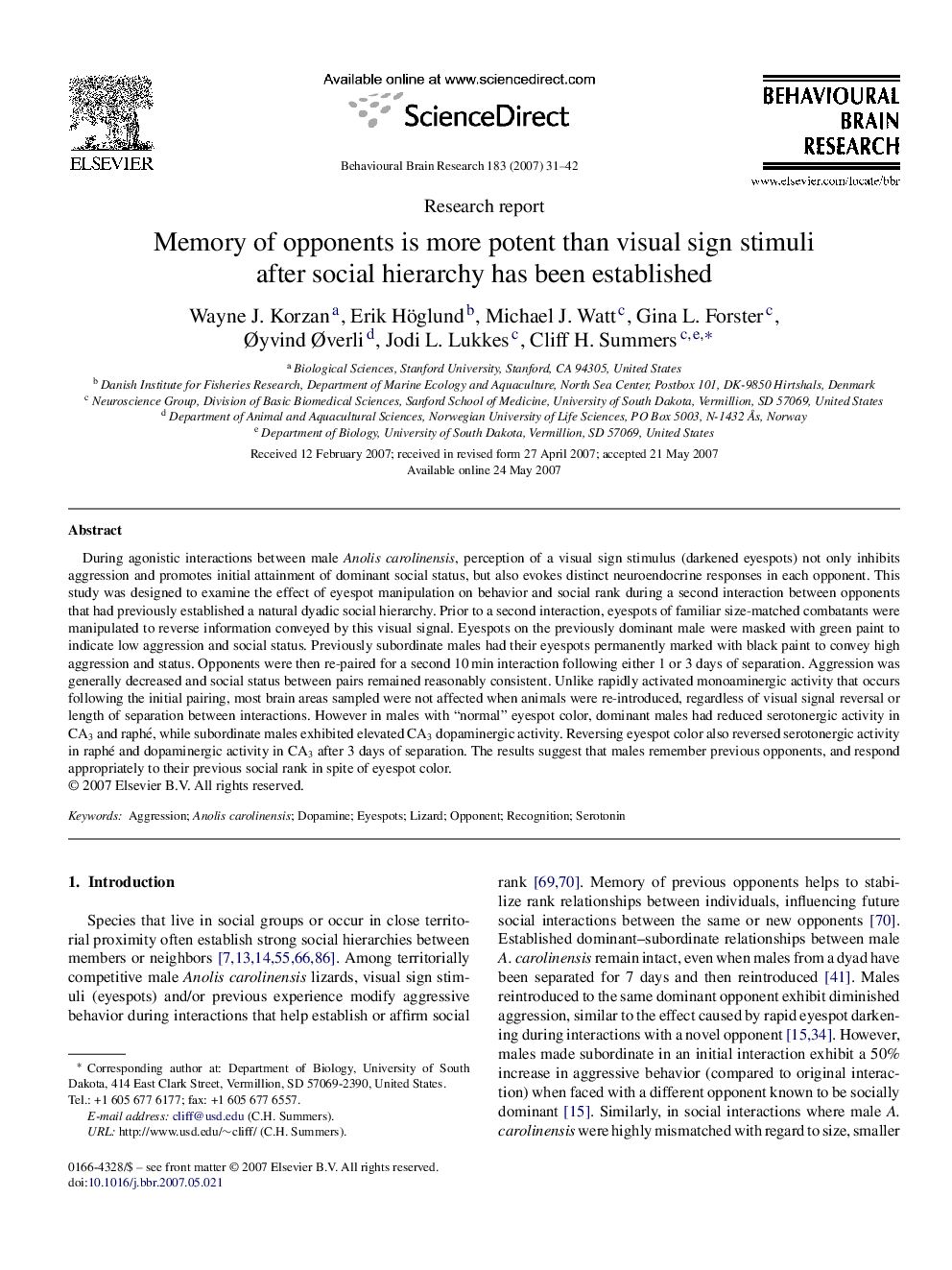| Article ID | Journal | Published Year | Pages | File Type |
|---|---|---|---|---|
| 4315325 | Behavioural Brain Research | 2007 | 12 Pages |
During agonistic interactions between male Anolis carolinensis, perception of a visual sign stimulus (darkened eyespots) not only inhibits aggression and promotes initial attainment of dominant social status, but also evokes distinct neuroendocrine responses in each opponent. This study was designed to examine the effect of eyespot manipulation on behavior and social rank during a second interaction between opponents that had previously established a natural dyadic social hierarchy. Prior to a second interaction, eyespots of familiar size-matched combatants were manipulated to reverse information conveyed by this visual signal. Eyespots on the previously dominant male were masked with green paint to indicate low aggression and social status. Previously subordinate males had their eyespots permanently marked with black paint to convey high aggression and status. Opponents were then re-paired for a second 10 min interaction following either 1 or 3 days of separation. Aggression was generally decreased and social status between pairs remained reasonably consistent. Unlike rapidly activated monoaminergic activity that occurs following the initial pairing, most brain areas sampled were not affected when animals were re-introduced, regardless of visual signal reversal or length of separation between interactions. However in males with “normal” eyespot color, dominant males had reduced serotonergic activity in CA3 and raphé, while subordinate males exhibited elevated CA3 dopaminergic activity. Reversing eyespot color also reversed serotonergic activity in raphé and dopaminergic activity in CA3 after 3 days of separation. The results suggest that males remember previous opponents, and respond appropriately to their previous social rank in spite of eyespot color.
